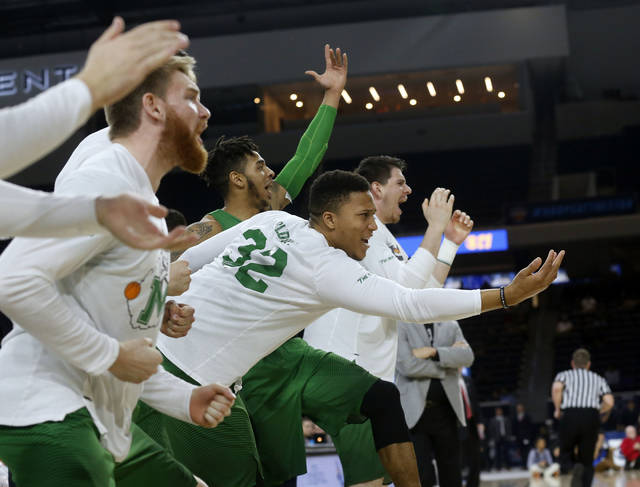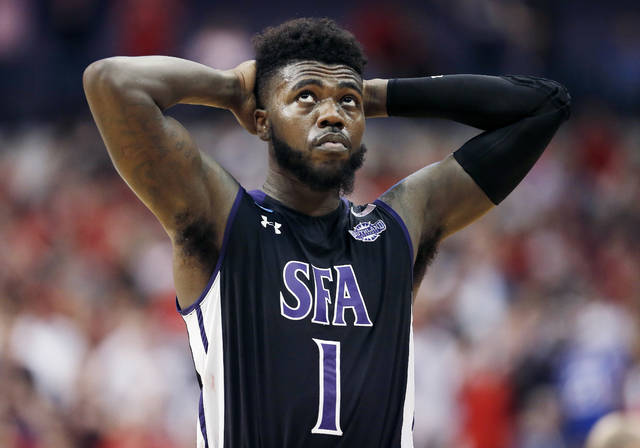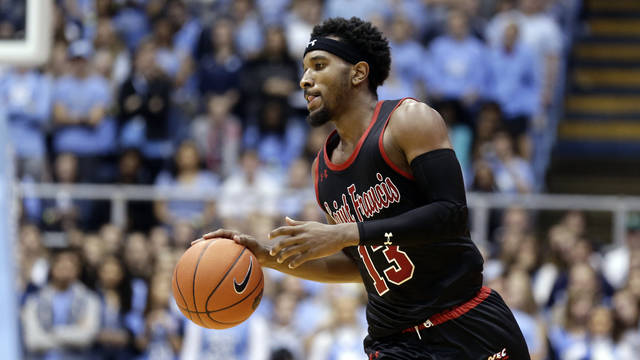


RALEIGH, N.C. (AP) — The new NCAA rule designed to help players explore their NBA draft potential by allowing them to sign with an agent and still return to school surprisingly doesn’t apply to all college players.
It was a stunning revelation for Phil Bledsoe from tiny Division II Glenville State in West Virginia when he learned the rule adopted amid the college basketball scandal only applies to Division I players.
Though Bledsoe followed the meticulous guidelines outlined by the NCAA to take advantage of the rule, he found out Tuesday that the restriction leaves him entangled in bureaucratic limbo and his college status unclear. He pulled out of the draft before Wednesday night’s 11:59 p.m. NCAA deadline for underclassmen to withdraw if they plan to return to campus.
“This didn’t need to happen,” Bill Lilly, the dismayed compliance coordinator at Glenville State who made the mistake, told The Associated Press. “I could’ve avoided it, but we could’ve had help in avoiding this thing, too, because we weren’t trying to sneak anything by anyone. We were just trying to give the kid the option we thought he had, and now he doesn’t have it.”
The NCAA did not immediately respond to inquiries about why the rule doesn’t apply to all college basketball players.
However, one thing is clear: Compliance officers play a pivotal role in the deciphering the rules. The NCAA allows schools to communicate directly with the NBA when notifying the league of a player’s intent to enter — then withdraw — from the draft.
Bledsoe sought out Maryland-based agent Jerry Dianis as he declared for the draft with the intent of maintaining his college eligibility. Dianis had previously attended a National Basketball Player Association seminar in recent months where NCAA representatives had attended to discuss the new rule, while Lilly said he spoke with colleagues and twice consulted with the NBA — which is focused on who is entering the draft and who is withdrawing, not who plans to return to school per NCAA guidelines.
Still, no one working with Bledsoe foresaw a problem for the 6-foot-6 junior who played his first two college seasons at Marshall in the Division I ranks.
“Everyone collectively, there was no division in thought in this,” Dianis said, “from the agent to the compliance officer to the head coach to the player. We were all on one accord.”
The rule, implemented last August amid numerous reforms proposed by former U.S. Secretary of State Condoleezza Rice’s Commission on College Basketball. It permits agents to cover minimal travel expenses for team meetings and workouts, though those contracts must end if the player withdraws from the draft and returns to school.
Sounds simple enough, until trying to determine who the rule applies to.
The rule was adopted by the Division I Board of Directors overseeing only the NCAA’s top division of athletics. The NCAA launched the “Committed to Change” web page to explain the reforms, and broad terms such as “basketball student-athletes” and “college basketball players” are used when referencing the new agent rule without definitively saying it does not apply to Division II or Division III players.
It takes a deeper dive into the NCAA’s legislative database to make that distinction.
All three divisions have a starting point of General Rule 12.3.1, which prohibits athletes from agreeing to be represented by an agent either verbally or in writing. But there’s an exception outlined in the Division I rules permitting players to sign with an NCAA-certified agent (Section 12.3.1.2), yet that exception doesn’t appear in the Division II and Division III rulebooks and was never adopted at those levels.
“You just don’t think of this being separated between Is, IIs and IIIs, and if so, why?” Lilly said. “What’s the purpose of not allowing a Division II kid to have the same opportunity a Division I kid has?”
Some Division I players took advantage of the rule, following the same steps that Bledsoe took, including one who also worked with Dianis without any problems.
The agent helped Kevon Harris of Stephen F. Austin get feedback on his game before he withdrew from the draft to return to school.
“Just having somebody that’s just for you, that’s looking out for you, that’s calling and talking to teams — just for you,” Harris said. “Because your coach, he can only do so much. He’s got a team full. Of course he’s going to look out for you, but an agent is supposed to do his part and talk to GMs himself and call around. … I’ve got my name out even more. I’m just excited to be able to do it.”
Northeast Conference player of the year Keith Braxton of St. Francis in Pennsylvania agrees with Harris.
Braxton, a 6-5 guard, signed with agent Pedro Power but hopes he has generated NBA interest as he returns for his senior season after withdrawing from the draft.
“Just having an agent helps you build those connections that you might not have had beforehand,” Braxton said, adding: “It’s very helpful, very helpful. I couldn’t imagine doing it without him.”
Bledsoe took the same route, followed the same steps. But because he plays at a Division II school, the accounting major who Dianis said has a 3.7 GPA now is awaiting to see what’s next for him.
Dianis doesn’t believe this is what Rice and the commission had in mind and he is optimistic Glenville State and the NCAA will be able to resolve Bledsoe’s situation.
“I’ve had the conversation with the NCAA and I don’t anticipate there will be any issues at all in reference to his continued playing,” Dianis said. “Rational minds realize it’s just an oversight on the NCAA’s part, is the way I look at it. You just have to be more clear.
“How hard is it to add a sentence or to add ‘Division I’ just to include that in the information that was sent out?”
___
Follow Aaron Beard on Twitter at http://www.twitter.com/aaronbeardap
___
More AP college basketball: https://apnews.com/CollegeBasketball and http://www.twitter.com/AP_Top25




